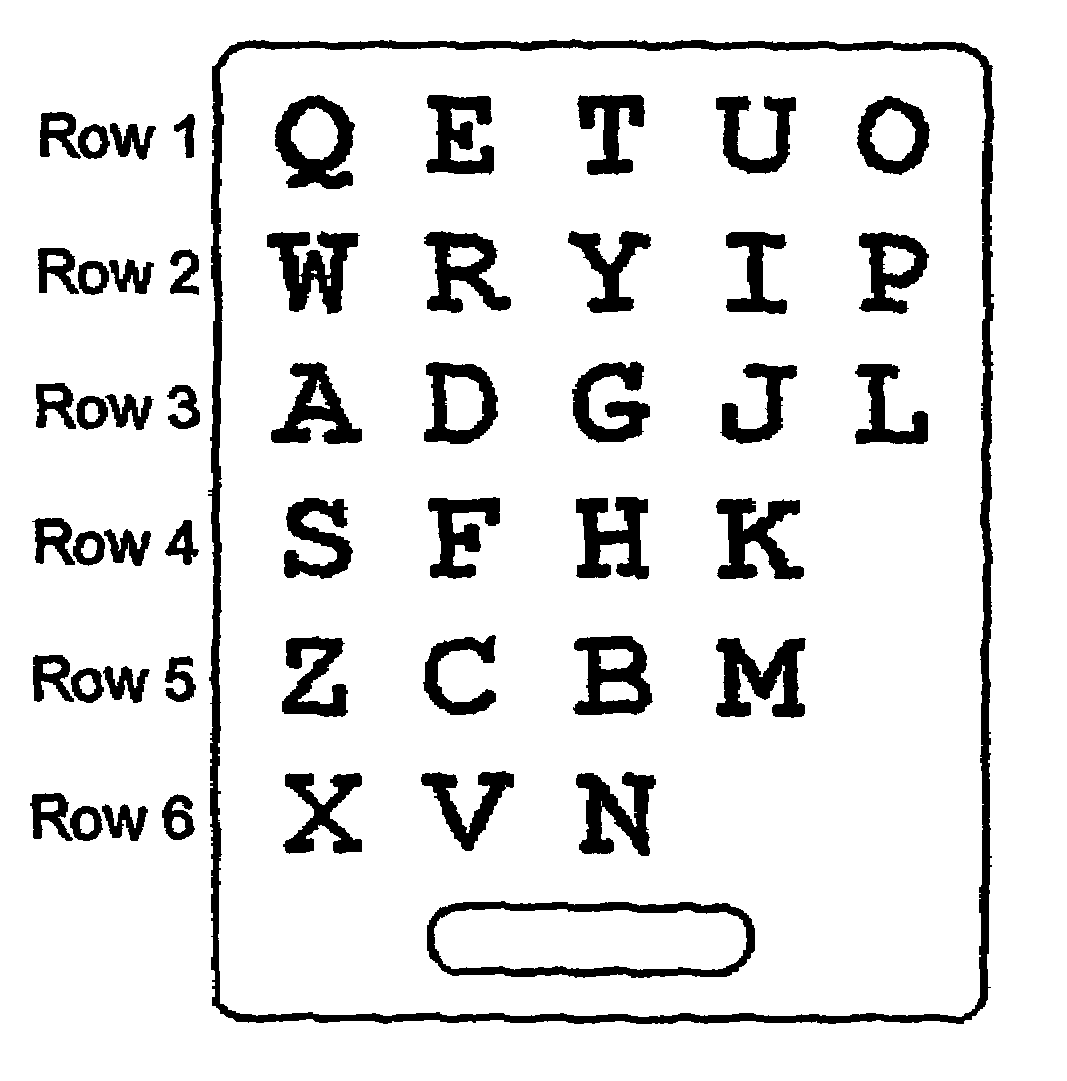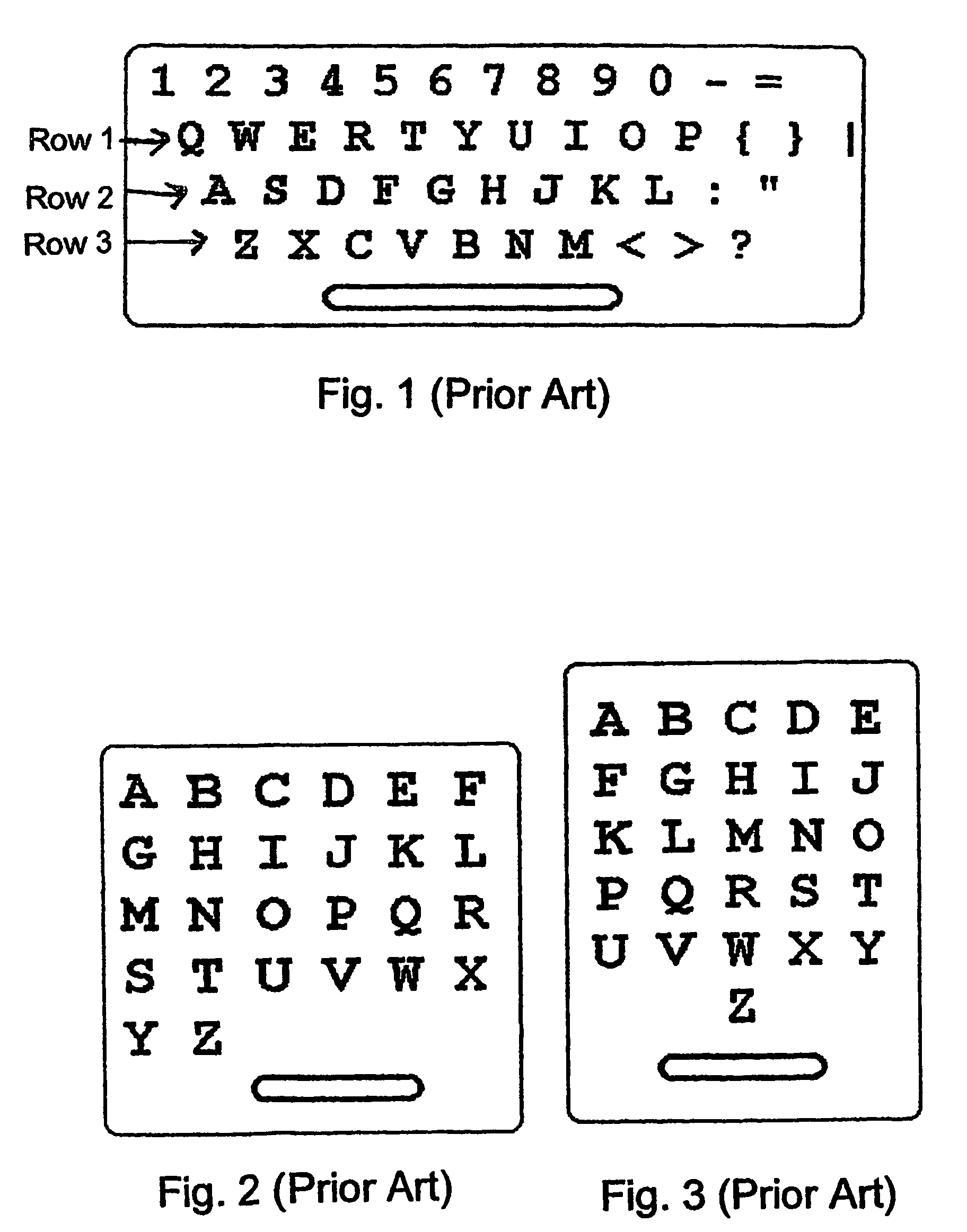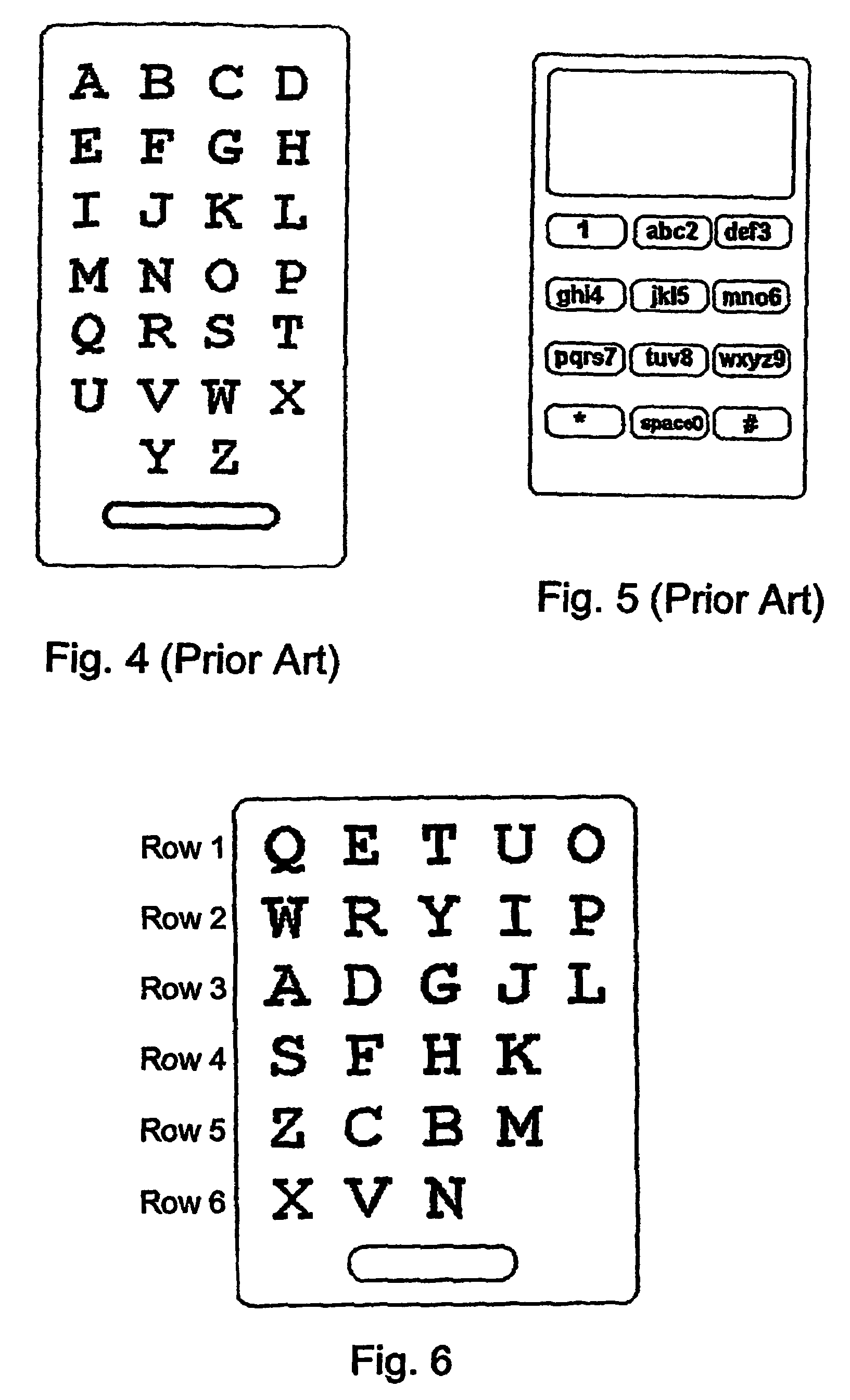Modified-qwerty letter layout for rapid data entry
a technology of data entry and letter layout, applied in the field of data entry interfaces, can solve the problems of difficult manual operation with one hand, unsuitable for hand-held portable devices and other applications, and traditional qwerty layout does not work well in applications
- Summary
- Abstract
- Description
- Claims
- Application Information
AI Technical Summary
Benefits of technology
Problems solved by technology
Method used
Image
Examples
Embodiment Construction
[0045]The invention involves a data entry interface layout that positions the twenty-six letters of the Roman alphabet in a matrix preferably including six rows of three to six letters per row. Ideally, no two adjacent letters are in alphabetical order. Thus, the invention relates to a keyboard, keypad, or other form of data-input interface that substantially departs from the dimensions and layout of a standard QWERTY and alphabetically ordered keyboards.
[0046]The invention also relates to a method for designing a data entry interface layout by transposing the letters of the Roman alphabet as found on a standard three-row QWERTY keyboard into six rows such that a letter within a first, second, or third row of the standard QWERTY keyboard is selected and placed in an additional row substantially below an unselected letter of said first, second, or third row.
[0047]For example, a new keyboard is created by transforming the 3 rows of letters on a standard QWERTY keyboard (FIG. 1) into a...
PUM
 Login to View More
Login to View More Abstract
Description
Claims
Application Information
 Login to View More
Login to View More - R&D
- Intellectual Property
- Life Sciences
- Materials
- Tech Scout
- Unparalleled Data Quality
- Higher Quality Content
- 60% Fewer Hallucinations
Browse by: Latest US Patents, China's latest patents, Technical Efficacy Thesaurus, Application Domain, Technology Topic, Popular Technical Reports.
© 2025 PatSnap. All rights reserved.Legal|Privacy policy|Modern Slavery Act Transparency Statement|Sitemap|About US| Contact US: help@patsnap.com



